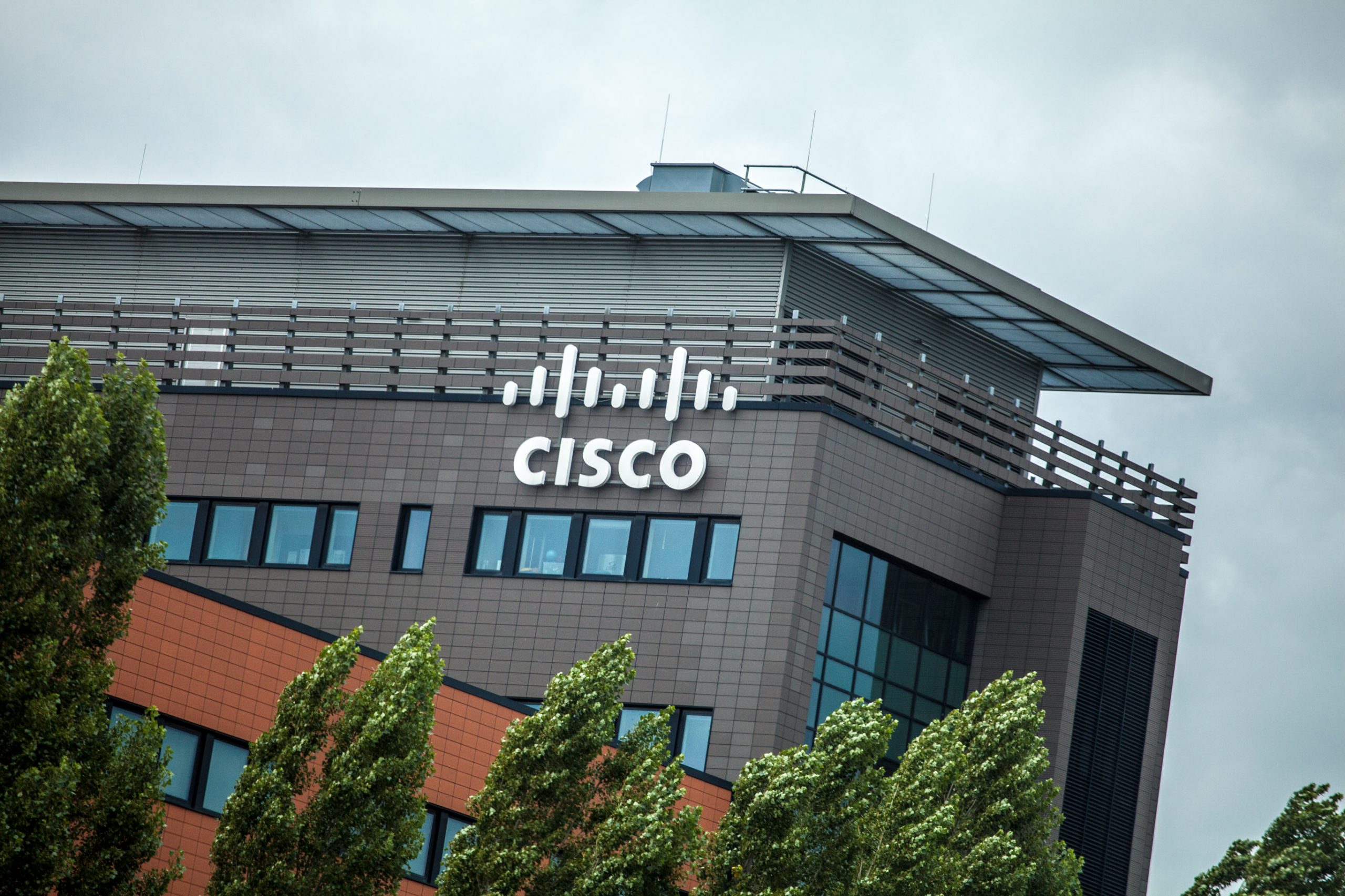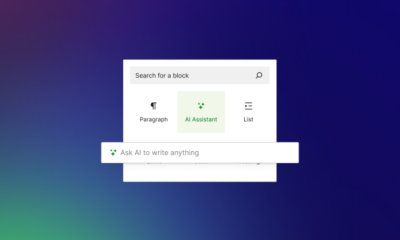TECHNOLOGY
Zero Trust, Authorship and Our Creative Future

In one of my recent CXO Spice Talk shows, a guest and I were talking about a foreseeable future where an individual – like us – would have a petaflop of computing power and a petabyte of storage.
What can we do with that? Well, instead of Zoom, we might send our 3D hologram to the customer meeting or beam up a performance dashboard as easily as Tony Stark, my favorite Avenger character.
This is the future: more data, bigger files, greater computing power. Not only that, but the future is approaching fast.
Technology transformation is, of course, rapidly underway in the workplace too. We are seeing the deployment of Artificial Intelligence, the acceleration of edge computing where devices themselves shoulder processing responsibilities, and a tsunami of connected IoT devices predicted to reach 500 billion by 2030, per a report by Gartner.
Today, though, I would like to explore a topic that is much larger than work. It is the dignity of an individual. The topic is creativity.
Creativity is very important to me. I believe every individual is creative. On the surface, we talk about writers and filmmakers and we call them creatives. However, a person who solves a critical problem, makes a life goal happen, starts a business or even just bakes a beautiful cake is creative.
According to a report from LinkedIn, creativity is the most in-demand soft skill and is second overall to cloud computing, which is a hard skill.
So with a rise in technology, which I believe must positively impact people to be worthwhile, how will our creativity remain secure?
Zero Trust is the New Firewall

The premise of zero trust security is assuming your operation has been breached. There’s a reason why this is important at this point in time. In an article written by Accenture’s security expert Gabe Albert “corporate network boundaries are disappearing” which inspires a contextual-based approach to security.
I like how IBM describes zero trust: “Security wrapped around every user, every device, every connection – every time.” This simple yet profound view mimics the creative process.
Last year, I published my book Ascend Your Start-up: Conquer the 5 Disconnects to Accelerate Growth. The creative process was as disciplined as it was fluid. There are many micro-interactions that lead to a book. I don’t think most people sit down to write a large composition. Instead, the creative process is a string of many micro-interactions with your subject matter. While I set word count goals, I also left plenty of space to imagine the book, explore what-if scenarios, and write stories about my climb up Mt. Everest to underscore the 5 disconnects.
The digital aspect of creativity was ever present in my efforts: collaborating with my publisher, saving different versions in the cloud, conducting research and interviews, drafting thoughts on my phone. Upon publication, we even transformed part of the book into an NFT.
I remember once, while working on a PowerPoint for a global event, someone had dropped in a picture I did not recognize and changed some of the content. I found out who it was and how they did it and applied a patch to my computer to prevent it from happening again. What would have happened if my book had been compromised, if whole pages had been changed or deleted?
As we create and innovate, how do we secure the world we create in?
The Cost of Cybersecurity For Enterprise Creatives

For enterprise companies, this is one reason why cybersecurity looks different than in the past. We are no longer playing defense. Cybersecurity goes far beyond phishing and virus protection or cyber-training new employees during the onboarding process.
Global cybercrime now tops almost $600 billion, according to online protection company McAfee. It’s time to change up the cybersecurity playbook.
Creativity is the fuel by which enterprise companies will succeed. We are becoming “enterprise creatives,” a term I use to describe people as we shift from process-driven jobs to more critical thinking roles.
IBM has developed solutions for enterprise creatives like Guardium Solution which keeps data where it resides rather than moving it to another place. It’s like keeping the data where the creative magic happens! Guardium also helps you break down silos for better risk assessment across data, identity and security operations center teams. Collaboration is a huge component of creativity for enterprise creatives.
Comparing, again, the enterprise world with the creative process we see the timing of a security matter. While working on my book, there were huge edits I made after the first draft. However, had I waited until the book’s near completion, those changes would have been almost irrevocable. IBM’s Security QRadar Security Information and Event Management (SIEM) helps security teams detect threats earlier so it’s easier to respond and fix the problem.
IBM’s solutions are an integral part of a zero trust strategy, accelerating a threat’s analysis and remediation – so you can use and connect tools of choice to your zero trust strategy with ease.
Our Creative Future
Playing defense holds us back from creating and innovating. According to the IBM Cyber Security Intelligence Index Report, 95% of all cyber-attacks result from human error, building security that goes where we create gives us the freedom to explore and create without worry or compromise – whether we are writing a book or merely beaming up our hologram to bring world-changing ideas to the stage.
What is your creative muse today?
From time to time, IBM collaborates with industry thought leaders to share their opinions and insights on current technology trends. The opinions in this article are my own, and do not necessarily reflect the views of BBN Times and IBM.
Source link
TECHNOLOGY
Next-gen chips, Amazon Q, and speedy S3

AWS re:Invent, which has been taking place from November 27 and runs to December 1, has had its usual plethora of announcements: a total of 21 at time of print.
Perhaps not surprisingly, given the huge potential impact of generative AI – ChatGPT officially turns one year old today – a lot of focus has been on the AI side for AWS’ announcements, including a major partnership inked with NVIDIA across infrastructure, software, and services.
Yet there has been plenty more announced at the Las Vegas jamboree besides. Here, CloudTech rounds up the best of the rest:
Next-generation chips
This was the other major AI-focused announcement at re:Invent: the launch of two new chips, AWS Graviton4 and AWS Trainium2, for training and running AI and machine learning (ML) models, among other customer workloads. Graviton4 shapes up against its predecessor with 30% better compute performance, 50% more cores and 75% more memory bandwidth, while Trainium2 delivers up to four times faster training than before and will be able to be deployed in EC2 UltraClusters of up to 100,000 chips.
The EC2 UltraClusters are designed to ‘deliver the highest performance, most energy efficient AI model training infrastructure in the cloud’, as AWS puts it. With it, customers will be able to train large language models in ‘a fraction of the time’, as well as double energy efficiency.
As ever, AWS offers customers who are already utilising these tools. Databricks, Epic and SAP are among the companies cited as using the new AWS-designed chips.
Zero-ETL integrations
AWS announced new Amazon Aurora PostgreSQL, Amazon DynamoDB, and Amazon Relational Database Services (Amazon RDS) for MySQL integrations with Amazon Redshift, AWS’ cloud data warehouse. The zero-ETL integrations – eliminating the need to build ETL (extract, transform, load) data pipelines – make it easier to connect and analyse transactional data across various relational and non-relational databases in Amazon Redshift.
A simple example of how zero-ETL functions can be seen is in a hypothetical company which stores transactional data – time of transaction, items bought, where the transaction occurred – in a relational database, but use another analytics tool to analyse data in a non-relational database. To connect it all up, companies would previously have to construct ETL data pipelines which are a time and money sink.
The latest integrations “build on AWS’s zero-ETL foundation… so customers can quickly and easily connect all of their data, no matter where it lives,” the company said.
Amazon S3 Express One Zone
AWS announced the general availability of Amazon S3 Express One Zone, a new storage class purpose-built for customers’ most frequently-accessed data. Data access speed is up to 10 times faster and request costs up to 50% lower than standard S3. Companies can also opt to collocate their Amazon S3 Express One Zone data in the same availability zone as their compute resources.
Companies and partners who are using Amazon S3 Express One Zone include ChaosSearch, Cloudera, and Pinterest.
Amazon Q
A new product, and an interesting pivot, again with generative AI at its core. Amazon Q was announced as a ‘new type of generative AI-powered assistant’ which can be tailored to a customer’s business. “Customers can get fast, relevant answers to pressing questions, generate content, and take actions – all informed by a customer’s information repositories, code, and enterprise systems,” AWS added. The service also can assist companies building on AWS, as well as companies using AWS applications for business intelligence, contact centres, and supply chain management.
Customers cited as early adopters include Accenture, BMW and Wunderkind.
Want to learn more about cybersecurity and the cloud from industry leaders? Check out Cyber Security & Cloud Expo taking place in Amsterdam, California, and London. Explore other upcoming enterprise technology events and webinars powered by TechForge here.
TECHNOLOGY
HCLTech and Cisco create collaborative hybrid workplaces

Digital comms specialist Cisco and global tech firm HCLTech have teamed up to launch Meeting-Rooms-as-a-Service (MRaaS).
Available on a subscription model, this solution modernises legacy meeting rooms and enables users to join meetings from any meeting solution provider using Webex devices.
The MRaaS solution helps enterprises simplify the design, implementation and maintenance of integrated meeting rooms, enabling seamless collaboration for their globally distributed hybrid workforces.
Rakshit Ghura, senior VP and Global head of digital workplace services, HCLTech, said: “MRaaS combines our consulting and managed services expertise with Cisco’s proficiency in Webex devices to change the way employees conceptualise, organise and interact in a collaborative environment for a modern hybrid work model.
“The common vision of our partnership is to elevate the collaboration experience at work and drive productivity through modern meeting rooms.”
Alexandra Zagury, VP of partner managed and as-a-Service Sales at Cisco, said: “Our partnership with HCLTech helps our clients transform their offices through cost-effective managed services that support the ongoing evolution of workspaces.
“As we reimagine the modern office, we are making it easier to support collaboration and productivity among workers, whether they are in the office or elsewhere.”
Cisco’s Webex collaboration devices harness the power of artificial intelligence to offer intuitive, seamless collaboration experiences, enabling meeting rooms with smart features such as meeting zones, intelligent people framing, optimised attendee audio and background noise removal, among others.
Want to learn more about cybersecurity and the cloud from industry leaders? Check out Cyber Security & Cloud Expo taking place in Amsterdam, California, and London. Explore other upcoming enterprise technology events and webinars powered by TechForge here.
TECHNOLOGY
Canonical releases low-touch private cloud MicroCloud

Canonical has announced the general availability of MicroCloud, a low-touch, open source cloud solution. MicroCloud is part of Canonical’s growing cloud infrastructure portfolio.
It is purpose-built for scalable clusters and edge deployments for all types of enterprises. It is designed with simplicity, security and automation in mind, minimising the time and effort to both deploy and maintain it. Conveniently, enterprise support for MicroCloud is offered as part of Canonical’s Ubuntu Pro subscription, with several support tiers available, and priced per node.
MicroClouds are optimised for repeatable and reliable remote deployments. A single command initiates the orchestration and clustering of various components with minimal involvement by the user, resulting in a fully functional cloud within minutes. This simplified deployment process significantly reduces the barrier to entry, putting a production-grade cloud at everyone’s fingertips.
Juan Manuel Ventura, head of architectures & technologies at Spindox, said: “Cloud computing is not only about technology, it’s the beating heart of any modern industrial transformation, driving agility and innovation. Our mission is to provide our customers with the most effective ways to innovate and bring value; having a complexity-free cloud infrastructure is one important piece of that puzzle. With MicroCloud, the focus shifts away from struggling with cloud operations to solving real business challenges” says
In addition to seamless deployment, MicroCloud prioritises security and ease of maintenance. All MicroCloud components are built with strict confinement for increased security, with over-the-air transactional updates that preserve data and roll back on errors automatically. Upgrades to newer versions are handled automatically and without downtime, with the mechanisms to hold or schedule them as needed.
With this approach, MicroCloud caters to both on-premise clouds but also edge deployments at remote locations, allowing organisations to use the same infrastructure primitives and services wherever they are needed. It is suitable for business-in-branch office locations or industrial use inside a factory, as well as distributed locations where the focus is on replicability and unattended operations.
Cedric Gegout, VP of product at Canonical, said: “As data becomes more distributed, the infrastructure has to follow. Cloud computing is now distributed, spanning across data centres, far and near edge computing appliances. MicroCloud is our answer to that.
“By packaging known infrastructure primitives in a portable and unattended way, we are delivering a simpler, more prescriptive cloud experience that makes zero-ops a reality for many Industries.“
MicroCloud’s lightweight architecture makes it usable on both commodity and high-end hardware, with several ways to further reduce its footprint depending on your workload needs. In addition to the standard Ubuntu Server or Desktop, MicroClouds can be run on Ubuntu Core – a lightweight OS optimised for the edge. With Ubuntu Core, MicroClouds are a perfect solution for far-edge locations with limited computing capabilities. Users can choose to run their workloads using Kubernetes or via system containers. System containers based on LXD behave similarly to traditional VMs but consume fewer resources while providing bare-metal performance.
Coupled with Canonical’s Ubuntu Pro + Support subscription, MicroCloud users can benefit from an enterprise-grade open source cloud solution that is fully supported and with better economics. An Ubuntu Pro subscription offers security maintenance for the broadest collection of open-source software available from a single vendor today. It covers over 30k packages with a consistent security maintenance commitment, and additional features such as kernel livepatch, systems management at scale, certified compliance and hardening profiles enabling easy adoption for enterprises. With per-node pricing and no hidden fees, customers can rest assured that their environment is secure and supported without the expensive price tag typically associated with cloud solutions.
Want to learn more about cybersecurity and the cloud from industry leaders? Check out Cyber Security & Cloud Expo taking place in Amsterdam, California, and London. Explore other upcoming enterprise technology events and webinars powered by TechForge here.
-

 MARKETING7 days ago
MARKETING7 days agoRoundel Media Studio: What to Expect From Target’s New Self-Service Platform
-

 SEO6 days ago
SEO6 days agoGoogle Limits News Links In California Over Proposed ‘Link Tax’ Law
-
SEARCHENGINES6 days ago
Daily Search Forum Recap: April 12, 2024
-

 SEARCHENGINES5 days ago
SEARCHENGINES5 days agoGoogle Core Update Volatility, Helpful Content Update Gone, Dangerous Google Search Results & Google Ads Confusion
-

 SEO5 days ago
SEO5 days ago10 Paid Search & PPC Planning Best Practices
-

 SEO7 days ago
SEO7 days agoGoogle Unplugs “Notes on Search” Experiment
-

 MARKETING6 days ago
MARKETING6 days ago2 Ways to Take Back the Power in Your Business: Part 2
-

 MARKETING4 days ago
MARKETING4 days ago5 Psychological Tactics to Write Better Emails















You must be logged in to post a comment Login